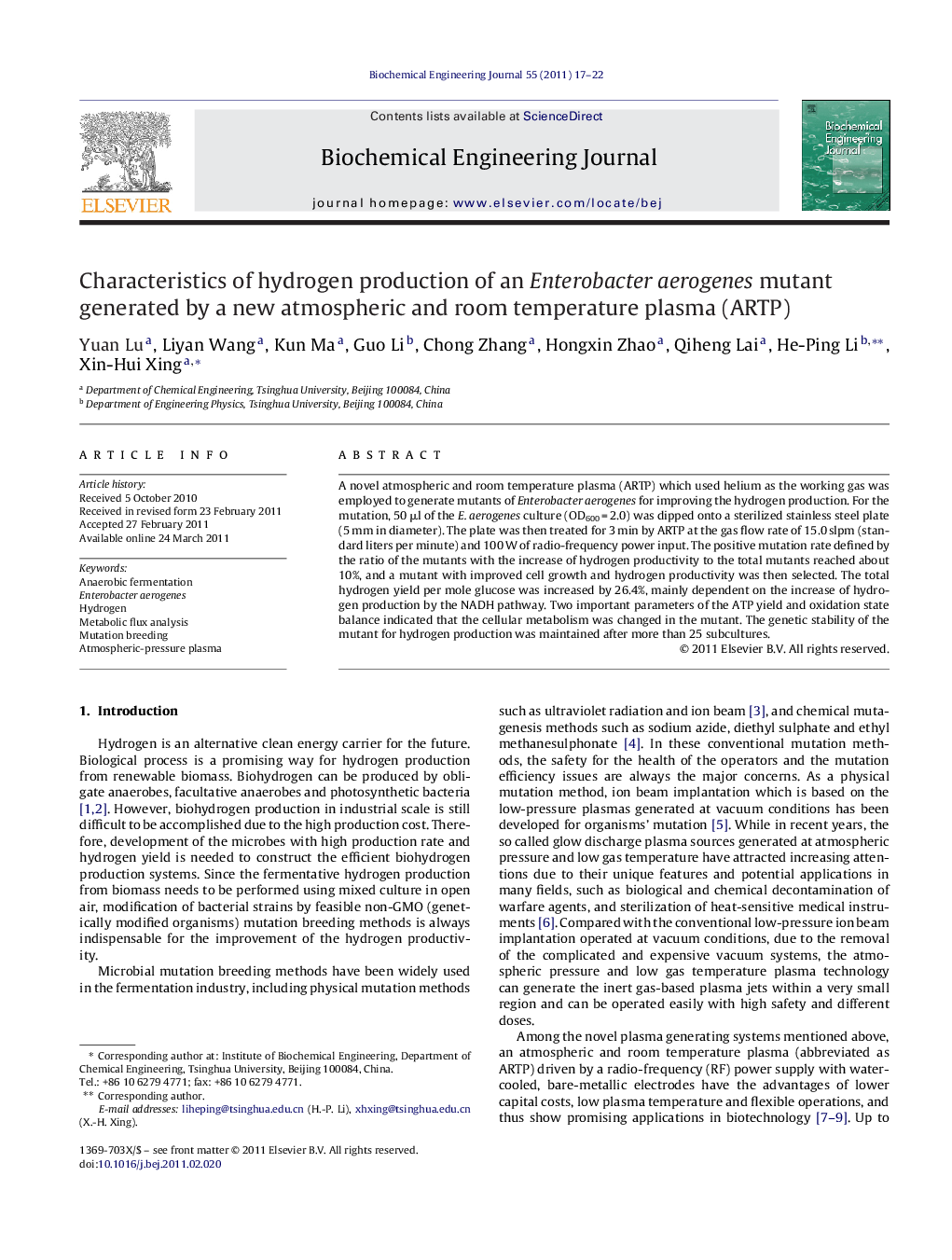| Article ID | Journal | Published Year | Pages | File Type |
|---|---|---|---|---|
| 3838 | Biochemical Engineering Journal | 2011 | 6 Pages |
A novel atmospheric and room temperature plasma (ARTP) which used helium as the working gas was employed to generate mutants of Enterobacter aerogenes for improving the hydrogen production. For the mutation, 50 μl of the E. aerogenes culture (OD600 = 2.0) was dipped onto a sterilized stainless steel plate (5 mm in diameter). The plate was then treated for 3 min by ARTP at the gas flow rate of 15.0 slpm (standard liters per minute) and 100 W of radio-frequency power input. The positive mutation rate defined by the ratio of the mutants with the increase of hydrogen productivity to the total mutants reached about 10%, and a mutant with improved cell growth and hydrogen productivity was then selected. The total hydrogen yield per mole glucose was increased by 26.4%, mainly dependent on the increase of hydrogen production by the NADH pathway. Two important parameters of the ATP yield and oxidation state balance indicated that the cellular metabolism was changed in the mutant. The genetic stability of the mutant for hydrogen production was maintained after more than 25 subcultures.
► ARTP could be a very useful tool for the mutation breeding. ► A hydrogen producing strain of E. aerogenes as a model was mutated by ARTP. ► The hydrogen yield of a positive mutant was increased by 26.4%. ► Cellular metabolism of the mutant was changed greatly. ► The hydrogen production stability of the mutant was kept after 25 subcultures.
